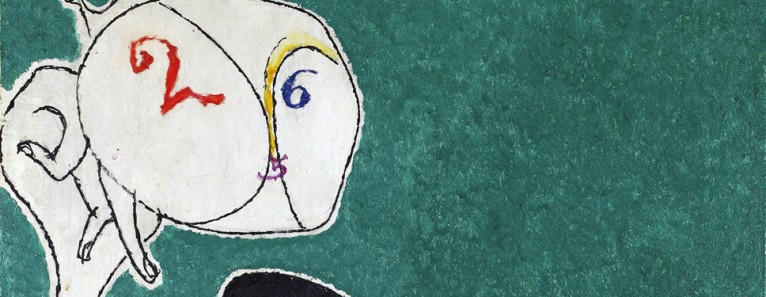During the XXIX Biennale di Venezia of 1958, Osvaldo Licini (1894 - 1958), an artist from the Italian region called Marche, was awarded the Grand Prize for painting, a tribute to one of the most original personalities of the Italian art scene, during the first half of the twentieth century. 60 years after that prestigious award and his death, the museum recalls the great master
with a retrospective exhibition, curated by Luca Massimo Barbero, open until January 14, 2019.
The exhibition
11 exhibition halls, over 100 works, retrace the disruptive and tormented artistic life of Licini, whose career was characterized by moments of crisis and apparently sudden stylistic changes.
The show opens with his young paintings, those that reproduce those landscapes of Marche region that Licini never broke away from, especially pictorially. They became the subject of his first figurative phase of the 20s, to which belong works like Paesaggio con l’uomo -1926- (Montefalcone) and Paesaggio marchigiano -1928- (Il trogolo). These same views are also
the backdrop to the subsequent transition from realism to the abstraction of the early 30s, as can already be seen in Paesaggio Fantastico -1927- (Il Capro).
Then comes the non-figurative phase of the 30s, years of the unavoidable involvement of the artist in the activities of the Galleria "Il Milione" , where Licini's abstract language is atypical, attentive to geometry, a geometry imbued with lyricism, evident in works like Castello in aria -1933/1936, or Obelisco -1932-.
His career and the great masterpieces of maturity dedicated to the themes of Flying Dutch, the Amalassunta and the Rebel Angel, all subjects present in the Venetian exhibition, are in “bilico” between the two poles of abstraction and figuration: in fact, in “bilico” means an unstable balance and it is the title and the subject of various works of Licini of the 30s. However, the most iconic works by Licini, presented as a group at the Biennale di Venezia in 1950, are those dedicated to the subject
of Amalassunta.
The wide selection of paintings of Amalassunta, offered along the exhibition path, proposes the many facets of Licini's personality, from the lyrical and contemplative side to the more ironic and irreverent one.
In his works, realized since the end of the 40s, converge themes, styles and the unresolved trial of painting, which makes Licini as a great protagonist of Italian and international modernism, all confirmed by the award conferred to him a few months before his death during the Biennale di Venezia on 1958.
More info
Opening hours: every day, except on Tuesday and December 25th,
from 10 am to 6 pm
Phone number: 0412405422
Everyday at 3.30 pm, free guided tours are offered at the exhibition, upon purchase of the
entrance ticket to the museum
 ?>
?>